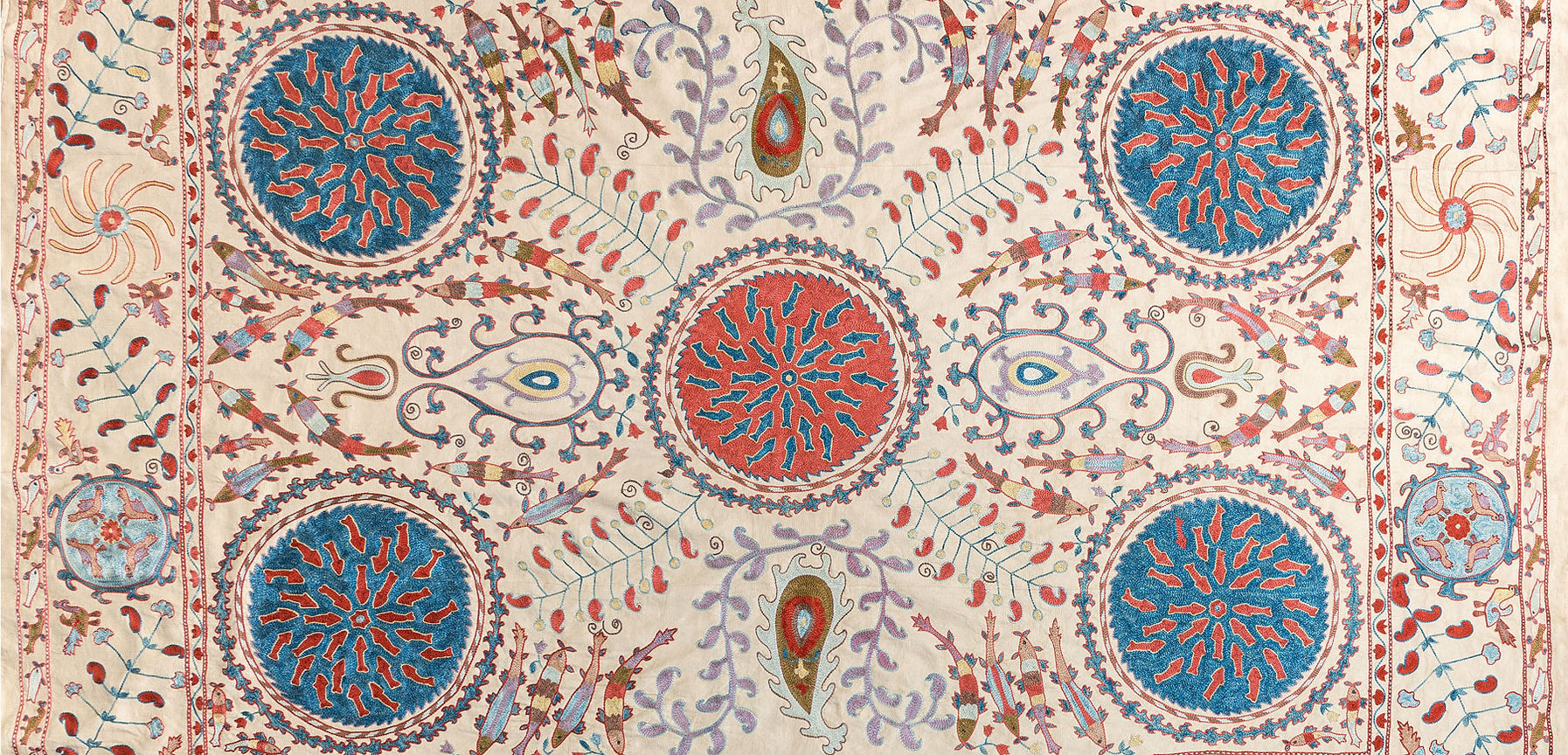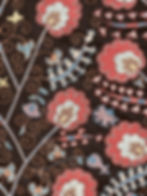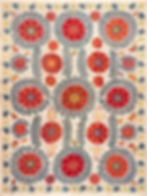SUZANIS

The name suzani derives from the Persian word for needle. There are 2 ways in English of pronouncing suzani - both are correct.
A suzani is a hand-embroidered textile panel and originates in Central Asia, the best examples coming from Uzbekistan. They were traditionally used by nomadic tribes for seating, sleeping, wall decoration and wrapping textiles and therefore the earliest ones got damaged and destroyed. The oldest surviving examples date from the late 18th and early 19th centuries. Many suzanis now sold as antique are not antique and many, although hand embroidered, use synthetic, usually polyester or viscose, yarns, not the traditional silk or cotton. Different patterns are associated with different geographical areas and cities and many of the motifs have specific symbolisms.
Suzanis are made from cotton, sometimes silk. The base cloths of Susan Deliss's suzanis are generally hand woven silk and cotton. The narrow silk and cotton strips are stitched together and the pattern is drawn on them, usually now by pen. The strips are then taken to pieces and the embroidery is done usually by one or two people - the fewer the better so that the quality of work remains consistent. Four stitches — tambour, basma, chain and kanda-khayol — are used on all suzanis. Susan Deliss's suzani cushions are made using the same methods. Once embroidered, the panels are then stitched back together.






